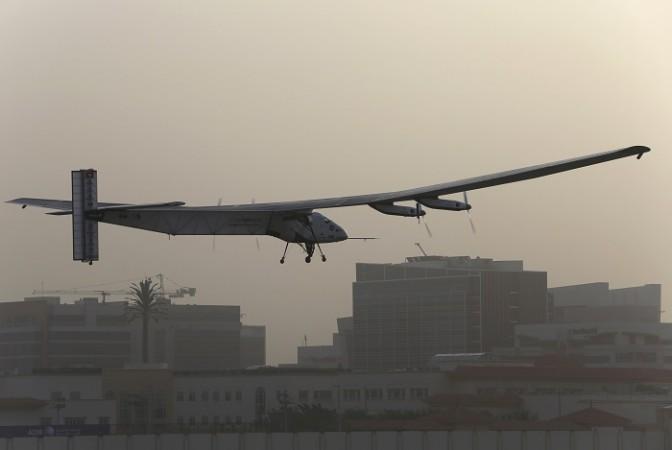
World's first ever solar-powered aircraft dubbed as 'Solar Impulse 2' was launched on Monday making its first attempt to fly around the world using energy only from the sun.
The Swiss aircraft, making its maiden global journey, will land in Ahmedabad on Tuesday for a stopover.
"Solar Impulse will take off from Abu Dhabi in the United Arab Emirates and land in Ahmedabad after making a first stop over at Muscat in Oman. It will make a pit-stop in Ahmedabad," a press release by the aircraft project's PR firm said, adding that the plane's founders and pilots will stay in the city for two days before leaving for Varanasi.
Solar Impulse will be the first flying object to scale the sky for days and nights without using fuel but only the energy derived from the sun, the project's website claims.
It is a single-searter aircraft made of carbon fibre and the mini-plane has a 72-metre wingspan, which is supposed to be bigger than that of a Boeing-747. Weighing around 2,300kg, the aircraft is thought to be at least as heavy as a normal car, the company further said.
Piloted by Andre Borschberg of Switzerland, the plane took off at around 7:12am local time from Al-Bateen airport in Abu Dhabi and flew to Oman's capital Muscat where it is expected to land later on Monday.
The flight will be a historic journey as it a culmination of 13 years of research and testing by Borschberg and his friend pilot Bertrand Piccard.
"This project is a human project, it is a human challenge," Borschberd told reporters on Sunday.
The epic journey is scheduled for a flight time of around 25 days with the plane making 12 stop-overs for the global flight that will end after five months.
First crossing the Arabian Sea to reach India, the flight is scheduled to head to various places such as Myanmar, China, Hawaii and New York.
The pilots will have to endure a tasking 250 hours of journey, flying the small aircraft from a small cockpit with no control over the oxygen or temperature, which will range between -40 to 40 degree Celsius, reports the Guardian.
"To fly with the sun, day and night, we had to build an aircraft that is extremely energy efficient. These technologies that provide energy efficiency can be used in your home, in your car, in the appliances that you buy," Borschberg said.













